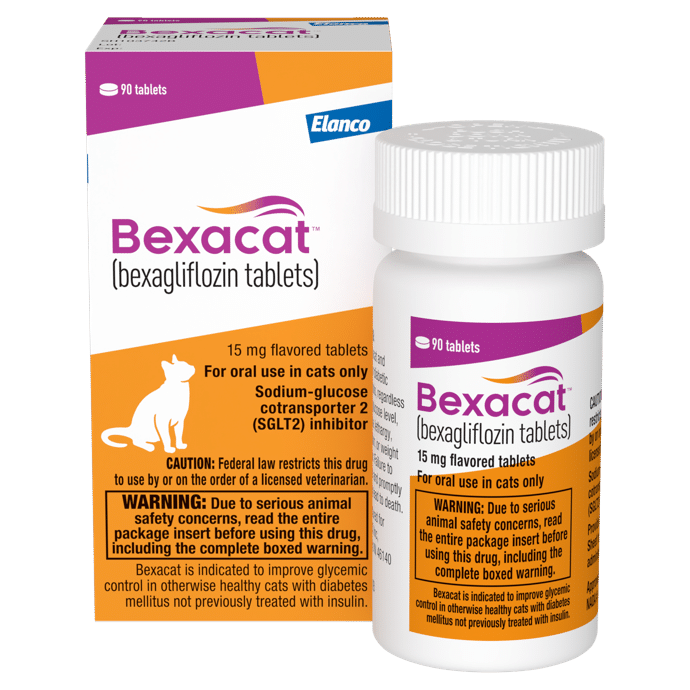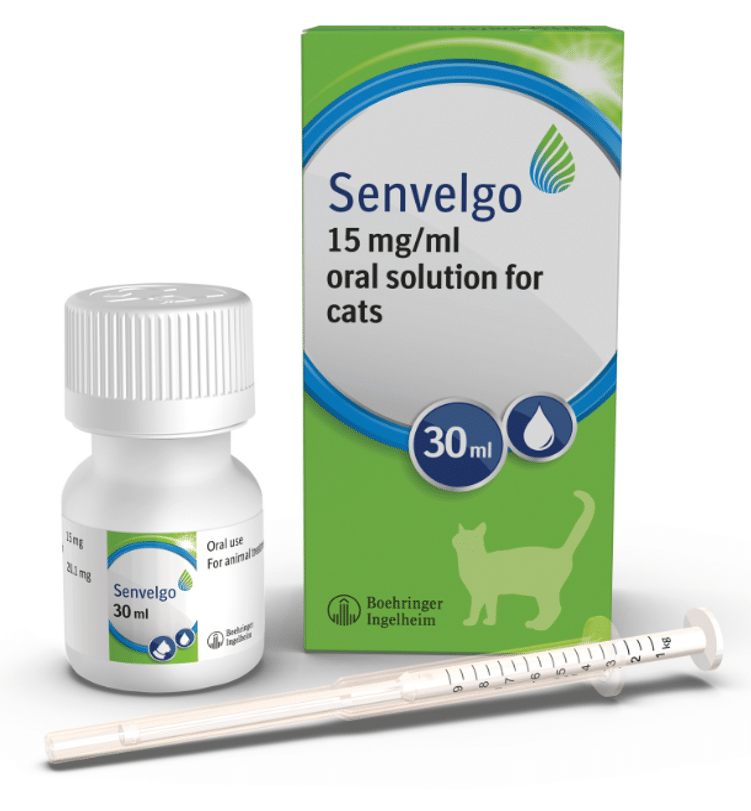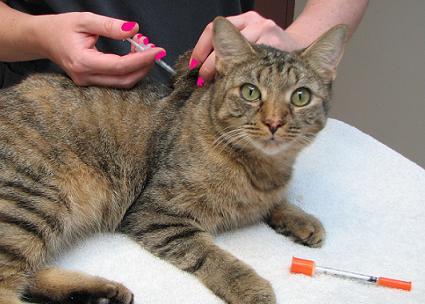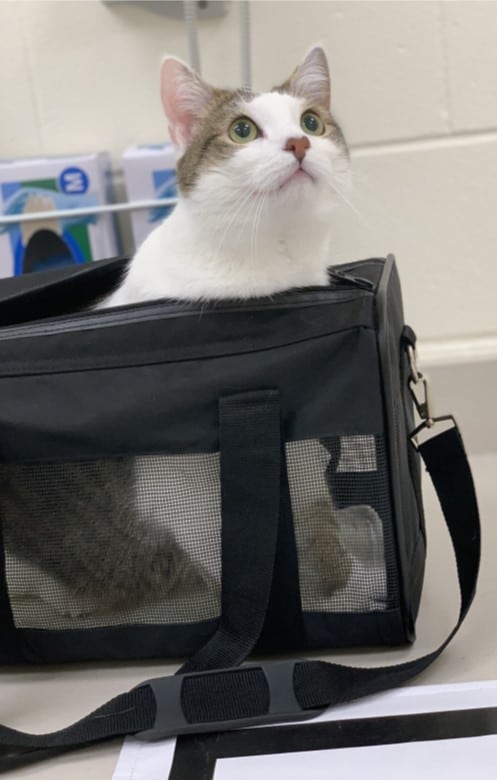-
Adopt
-
Veterinary Care
Services
Client Information
- What to Expect – Angell Boston
- Client Rights and Responsibilities
- Payments / Financial Assistance
- Pharmacy
- Client Policies
- Our Doctors
- Grief Support / Counseling
- Directions and Parking
- Helpful “How-to” Pet Care
Online Payments
Emergency: Boston
Emergency: Waltham
Poison Control Hotline
-
Programs & Resources
- Careers
-
Donate Now
 By Susan O’Bell, DVM, MPH, DACVIM
By Susan O’Bell, DVM, MPH, DACVIM![]()
angell.org/generalmedicine
generalmedicine@angell.org
617-522-7282
x
x
x
Introduction
Today’s doctors are fortunate to practice veterinary medicine at a time when quality, comprehensive primary care practice is expected by clients whose pets have earned their place as family members in households near and far. Specialty care is readily available, particularly in urban areas, and it may be a choice for some clients. Many clients prefer to extend care with their primary clinicians for numerous reasons. Management of chronic and/or advanced medical conditions may excite or overwhelm you as a primary care veterinarian. The author of this article is an internist turned primary care veterinarian, and she hopes to highlight some practical and accessible Internal Medicine tips for managing a few common conditions.
Diabetes Mellitus Management Updates
In 2023, many new exciting pharmaceutical products emerged in veterinary practices. A true game- changer is the class of SGLT-2 inhibitors for managing feline diabetes mellitus. The “gliflozins” are the standard of care in human medicine for managing insulin-resistant diabetes mellitus and are also recognized for their benefits in cardiovascular and renal conditions. Bexacat (Elanco) and Senvelgo (Boehringer Ingelheim) are the two medications in this class for feline patients.
changer is the class of SGLT-2 inhibitors for managing feline diabetes mellitus. The “gliflozins” are the standard of care in human medicine for managing insulin-resistant diabetes mellitus and are also recognized for their benefits in cardiovascular and renal conditions. Bexacat (Elanco) and Senvelgo (Boehringer Ingelheim) are the two medications in this class for feline patients.
SGLT2 inhibitors work by inhibiting sodium-glucose cotransporter-2 found in the kidney’s proximal tubule. This blockade prevents the reabsorption of glucose that typically occurs via the SGLT2 cotransporter, thus resulting in increased glucose excretion into the urine, as depicted in this relatively simple picture (left).
Hypoglycemia is prevented because additional sodium-glucose cotransporters are found primarily in the intestines (SGLT1). SGLT2 inhibitors are selective, and although some cross-reactivity may occur, the degree to which it is unknown is usually mild and could differ amongst specific medications.
SGLT2 inhibitors rely on some amount of insulin to be effective and to prevent the most concerning potential side-effect, ketoacidosis. Thus these medications are only for use in cats. An estimated 90% of feline diabetics fall into the “Type 2” category, characterized by insulin resistance, Beta cell exhaustion, and decreased insulin sensitivity. Successful use of this medication does require some thoughtful patient selection. “Sick” diabetics should be started on insulin instead. Both Bexacat and Senvelgo have comprehensive algorithms to guide a doctor through baseline testing and considerations before prescribing them. That being said, the author suggests screening as much as a client will allow. If the choice is between treatment with one of these medications and euthanasia, the author might still consider one of these medications instead.
potential side-effect, ketoacidosis. Thus these medications are only for use in cats. An estimated 90% of feline diabetics fall into the “Type 2” category, characterized by insulin resistance, Beta cell exhaustion, and decreased insulin sensitivity. Successful use of this medication does require some thoughtful patient selection. “Sick” diabetics should be started on insulin instead. Both Bexacat and Senvelgo have comprehensive algorithms to guide a doctor through baseline testing and considerations before prescribing them. That being said, the author suggests screening as much as a client will allow. If the choice is between treatment with one of these medications and euthanasia, the author might still consider one of these medications instead.
The main difference between these two medications is that Bexacat is a flavored tablet. In contrast, Senvelgo is a flavored liquid, and Bexacat is one tablet per cat 3.0 kg or greater. At the same time, Senvelgo is 1 mg/kg with no minimum weight restriction, and the product insert recommendations for ketone screening differ at this time. Both medications are only given once daily to naïve diabetics, have a  similar side effect profile, and should work generally interchangeably otherwise. Screen for ketones the day you start treatment (or as close to it as possible). I think how you screen for ketones is less important than the fact that it should be done. That being said, patient-side ketone readers are readily available online, have been validated for use in cats, are inexpensive (currently ~ $28), are easy to use, require just a drop of blood, and may make sense if you are already checking a blood glucose level. Additionally, they may detect increases in ketone bodies earlier than urine screening based on the ketone body they detect. The product insert cut-off of 2.4 for a ketone reading might be a little high. Most non-ketotic cats will have baseline ketone levels of 0.5 or lower.
similar side effect profile, and should work generally interchangeably otherwise. Screen for ketones the day you start treatment (or as close to it as possible). I think how you screen for ketones is less important than the fact that it should be done. That being said, patient-side ketone readers are readily available online, have been validated for use in cats, are inexpensive (currently ~ $28), are easy to use, require just a drop of blood, and may make sense if you are already checking a blood glucose level. Additionally, they may detect increases in ketone bodies earlier than urine screening based on the ketone body they detect. The product insert cut-off of 2.4 for a ketone reading might be a little high. Most non-ketotic cats will have baseline ketone levels of 0.5 or lower.
The author finds this class of medications truly inspiring. Clients have been indeed held captive by twice-daily insulin schedules for decades (the author acknowledges that some cats can be treated with once-daily insulin). Gliflozins almost completely eliminate the risk of clinical hypoglycemia. Storage and handling are both easier and safer. Management by veterinarians may also become much less complicated. (And finding cat-sitters may also be easier for clients!) The mechanism of action results in sustained euglycemia in most treated cats, completely eliminating the need for blood glucose curves. It also permits exhausted pancreatic Beta cells a chance to recover, potentially leading to remission.
Although not a new test, serum fructosamine levels may appreciate increased popularity due to the advent of SGLT2 inhibitor use. Fructosamine measures glycated serum proteins (primarily albumin), and past studies have demonstrated that quantifying serum fructosamine concentration is a meaningful test for the diagnosis of diabetes and for differentiating diabetes from stress hyperglycemia. Fructosamine levels may be the most useful test for monitoring cats on SGLT2 inhibitors since stress hyperglycemia could still impact spot blood glucose measurement.
past studies have demonstrated that quantifying serum fructosamine concentration is a meaningful test for the diagnosis of diabetes and for differentiating diabetes from stress hyperglycemia. Fructosamine levels may be the most useful test for monitoring cats on SGLT2 inhibitors since stress hyperglycemia could still impact spot blood glucose measurement.
Of course, not all cats will be candidates for or successfully managed on Bexacat or Senvelgo. There is still a place for serial blood glucose measurements in these cats. Continuous glucose monitoring seems to be a divisive topic since the author finds that clinicians have either strongly positive or negative anecdotal experiences with their use. The author suggests that doctors should prepare themselves and the client as much as possible for the goal of monitoring. In some instances, 12 to 24 hours worth of data trends can be beneficial. Sometimes, it can be a great way to get clients involved, but setting up expectations surrounding data interpretation and treatment adjustments is also helpful. Another suggestion is to set up a clinic policy that everyone knows before using it. What will a doctor do if the monitor falls off or doesn’t seem to be reading accurately? Assign one or two clinic assistants to be well-learned to apply the sensors themselves since there is a bit of a learning curve applying them. Commercially available wipes may help prep shaved skin to make the sensors adhere better, as can a judicious use of skin glue (one tiny drop at each 12, 3, 6, and 9 o’clock). Clients and cats may better tolerate Stockinette or small fleece shirts than E collars if you find cats bothered by the sensors. The author uses LibreView to manage patient data instead of asking clients to send screenshots or isolated reports; setting up an account and sending invitations to clients to start this process is straightforward.
Speaking of insulin selection, although veterinarians are not mandated to choose FDA-approved products as first-choice treatments, the author tends to lean toward Vetsulin as first choice for dogs and glargine (Lantus) for cats, as AAHA’s Diabetes Mellitus guidelines also support this https://www.aaha.org/aaha-guidelines/diabetes-management/treatment/insulin-therapies/. The advantage of these approved insulins is that client and practitioner support materials are well-established. Vetsulin is available in a pen for easier administration, and the author has used Vetsulin’s home care instructions document and finds it very user-friendly and client-friendly: https://www.merck-animal-health-usa.com/vetsulin/client-discharge-form.
(There is speculation that Detemir will be discontinued by the end of 2024, so the author does not select this as a first-choice insulin, nor would it be helpful to transition patients who need a different insulin to Detemir or Levemir at this time, given the availability may become extremely limited in the near future.)
Insulin Glargine is a recombinant human insulin analog; most veterinarians are more familiar with using Lantus. Toujeo is also Glargine, but it is not bioequivalent to Lantus and, therefore, is not  interchangeable. Toujeo has three times the active ingredient and zinc and has been shown in people to have a flatter (“peakless”) and more prolonged profile of glucose-lowering activity compared with Lantus at the same dose (up to 36 hours). It may have a longer duration of action in cats and dogs, making it a reasonable choice for patients with insulin that is too short or where twice-daily injections are not possible. A 2022 ACVIM abstract from Professor Chen Gilor showed in a multi-institutional study including newly diagnosed dogs and dogs previously treated with other insulin formulations that, overall, dogs were well controlled on Toujeo and that half of them could be maintained on once-daily injections. He also noted that the required dosages ranged greatly to achieve good control and that a higher dose of Toujeo is required compared to doses standardly reported for other types of insulin. The starting dose was 0.5 U/Kg q24h for newly diagnosed dogs and 0.8 U/Kg (0.2 to 2.5) q24h for the dogs transitioned from other insulins. Of the half of dogs requiring twice daily injections, their total daily insulin requirements ranged from 0.6 to 5.0 U/kg/day. Only one dog in the study required less than 0.5 units/kg/day; therefore, 0.5 units/kg/day is a reasonable starting dose. This study also suggests Toujeo is less potent in dogs than in people (who often require the same dose as Lantus glargine, for example). Toujeo seems to have a similarly “peakless” profile in cats and a long duration of action (16 hours). Minimal data suggests cats can be managed highly effectively on twice-daily injections (0.5 U/kg/dose), and as mentioned previously, Toujeo could be a good choice if once-daily injections are your only option.
interchangeable. Toujeo has three times the active ingredient and zinc and has been shown in people to have a flatter (“peakless”) and more prolonged profile of glucose-lowering activity compared with Lantus at the same dose (up to 36 hours). It may have a longer duration of action in cats and dogs, making it a reasonable choice for patients with insulin that is too short or where twice-daily injections are not possible. A 2022 ACVIM abstract from Professor Chen Gilor showed in a multi-institutional study including newly diagnosed dogs and dogs previously treated with other insulin formulations that, overall, dogs were well controlled on Toujeo and that half of them could be maintained on once-daily injections. He also noted that the required dosages ranged greatly to achieve good control and that a higher dose of Toujeo is required compared to doses standardly reported for other types of insulin. The starting dose was 0.5 U/Kg q24h for newly diagnosed dogs and 0.8 U/Kg (0.2 to 2.5) q24h for the dogs transitioned from other insulins. Of the half of dogs requiring twice daily injections, their total daily insulin requirements ranged from 0.6 to 5.0 U/kg/day. Only one dog in the study required less than 0.5 units/kg/day; therefore, 0.5 units/kg/day is a reasonable starting dose. This study also suggests Toujeo is less potent in dogs than in people (who often require the same dose as Lantus glargine, for example). Toujeo seems to have a similarly “peakless” profile in cats and a long duration of action (16 hours). Minimal data suggests cats can be managed highly effectively on twice-daily injections (0.5 U/kg/dose), and as mentioned previously, Toujeo could be a good choice if once-daily injections are your only option.
Diabetes mellitus and hyperadrenocorticism are two relatively common endocrinopathies that can be managed successfully by primary care veterinarians. However, throwing the conditions together in the same patient can become more challenging and frustrating for all involved. There is a lot of overlap between the clinical signs and laboratory abnormalities, making it harder for veterinarians to know how successfully they manage either or both conditions. Here are some tips for success:
- Unregulated diabetics typically experience weight loss, and patients with hyperadrenocorticism typically do not; therefore, try to manage the patient’s diabetes “well enough” to stop weight loss before tackling their Cushing’s.
- Excess glucocorticoids can result in a shorter duration of insulin action in dogs (very frustrating), but a “pro” of this scenario is that clinical hypoglycemia is rare. With a typical intermediate-acting insulin, a BG curve might very well show decreased glucose levels for only a few hours after injection and then marked hyperglycemia. A strategy for this can be to supplement the intermediate-acting insulin with a “background” long-acting insulin such as glargine. If a veterinarian decides to try this, the author suggests keeping the same total insulin dose in units the patient is already receiving, so decrease the current dose to account for the new addition of a second insulin.
- Although many patients with hyperadrenocorticism alone can be managed successfully on once-daily trilostane, diabetic dogs with hyperadrenocorticism may do better with BID or even TID trilostane. This relates to point #2 above, which provides more stable serum cortisol over the course of a day to achieve a more stable and predictable insulin requirement. Some patients may even need TID insulin based on their glucose curve results and clinical picture assessment.
- If ALP continues to rise on serum chemistry profiles in the face of management for hyperadrenocorticism and diabetes, that can be a clue to assess the chosen Cushing’s treatment strategy further.
Geriatric Patient “Potpourri”
Having been a veterinarian for 20 years, the author has realized the significant frequency with which clients wish to discuss concerns related to the aging of their pets. Some clients may feel guilt complaining about their pet’s frequent night-waking or accidents in the house, but all pet owners know how sleepless nights and cleaning up various messes can lead to resentment, sadness, or desperation. For a multitude of new symptoms, the author suggests trying to eliminate pain as a cause first. Some clients still believe pets are only in pain if they are overtly lame or vocalizing. Clients may also be embarrassed to think they might have ignored signs of pain in their pets. Clients also may project their own personal beliefs about aging and/or the use of pain relief in themselves onto their pets (both in favor of treating pain and withholding treatment). Although chronic pain can require more than one approach and persistence to un-do “wind-up,” the author suggests starting with a finite trial of pain relief of some kind for a multitude of symptoms, including restlessness, sometimes increased panting, night-waking, and on occasion, inappropriate eliminations (after a physical exam and minimum database plus urine culture if we are talking about urinary accidents). Judicious use of NSAIDs can be tolerated in many canine patients, even those with some stable/mild co-morbidities. (The author does not personally use NSAIDs in geriatric cats, but data suggests this fear may be unfounded.) However, the advent of anti-NGF monoclonal antibodies (Solensia in cats, Librela in dogs) provides an alternative option for many cats and dogs. Gabapentin is also widely used due to its safety profile, dosing range, and a multitude of benefits. The author has found some senior dogs, in particular, more sensitive to the sedation and ataxia side effects of Gabapentin; one suggestion is to start Gabapentin at a lower dose and possibly once daily at night, just in case. Some pets may need to have their Gabapentin discontinued or reduced in dose or frequency in case of side effects.
about their pet’s frequent night-waking or accidents in the house, but all pet owners know how sleepless nights and cleaning up various messes can lead to resentment, sadness, or desperation. For a multitude of new symptoms, the author suggests trying to eliminate pain as a cause first. Some clients still believe pets are only in pain if they are overtly lame or vocalizing. Clients may also be embarrassed to think they might have ignored signs of pain in their pets. Clients also may project their own personal beliefs about aging and/or the use of pain relief in themselves onto their pets (both in favor of treating pain and withholding treatment). Although chronic pain can require more than one approach and persistence to un-do “wind-up,” the author suggests starting with a finite trial of pain relief of some kind for a multitude of symptoms, including restlessness, sometimes increased panting, night-waking, and on occasion, inappropriate eliminations (after a physical exam and minimum database plus urine culture if we are talking about urinary accidents). Judicious use of NSAIDs can be tolerated in many canine patients, even those with some stable/mild co-morbidities. (The author does not personally use NSAIDs in geriatric cats, but data suggests this fear may be unfounded.) However, the advent of anti-NGF monoclonal antibodies (Solensia in cats, Librela in dogs) provides an alternative option for many cats and dogs. Gabapentin is also widely used due to its safety profile, dosing range, and a multitude of benefits. The author has found some senior dogs, in particular, more sensitive to the sedation and ataxia side effects of Gabapentin; one suggestion is to start Gabapentin at a lower dose and possibly once daily at night, just in case. Some pets may need to have their Gabapentin discontinued or reduced in dose or frequency in case of side effects.
Chronic pain management is way beyond daily NSAID or Gabapentin use, however. (The author suggests AAHA Pain management guidelines for a comprehensive review of acute and chronic pain assessment and treatment options.) A multimodal approach is ideal. Do not underestimate the power of weight loss to ameliorate chronic osteoarthritis pain. Weight loss goals for improvement in OA symptoms tend to be relatively modest (~5-7% weight loss), and modest weight loss goals may be more attainable and palatable to clients. The author also suggests that clients find a rehabilitation program for pain management; they are particularly beneficial for geriatric patients suffering from chronic pain, anxiety, and weight gain.
Nutrition is a daunting topic for many veterinarians during all life stages of their patients. Although there are therapeutic diets for probably every diagnosis or even a combination of diagnoses, the author often takes a “don’t rock the boat” approach, particularly for geriatric patients who may have more finicky appetites. Weight issues (both over and under-conditioning) and loss of mean muscle mass should be addressed with calorie, fat, and protein management in particular, ideally after minimum diagnostics establish any specific nutritional needs or contraindications (renal disease features prominently here in terms of avoidance of excessive protein diets and phosphorus restriction). In terms of diabetes, the author notes that she does not typically change a dog’s diet if they are otherwise doing well, and the diet is generally not “offensive” to managing their diabetes. If marked post-prandial hyperglycemia is occurring or persistent hypertriglyceridemia, then therapeutic diets may be helpful. The author does not change cats to diabetic diets while at the same time starting insulin or SGLT2 inhibitors and suggests that veterinarians save diet changes for future recheck appointments. It’s best not to change too many things simultaneously, particularly in geriatric patients, but this approach can vary significantly from clinician to clinician.